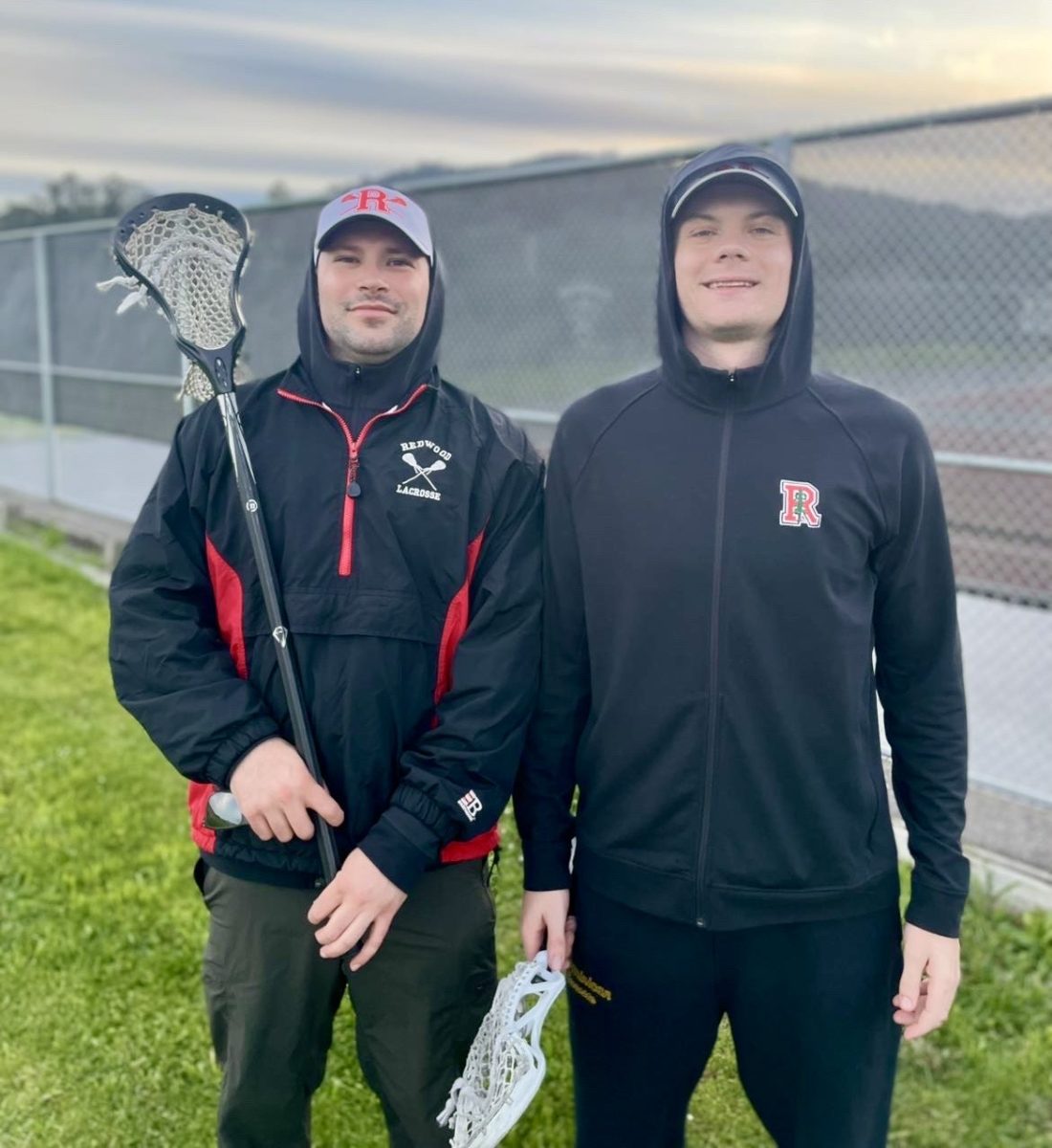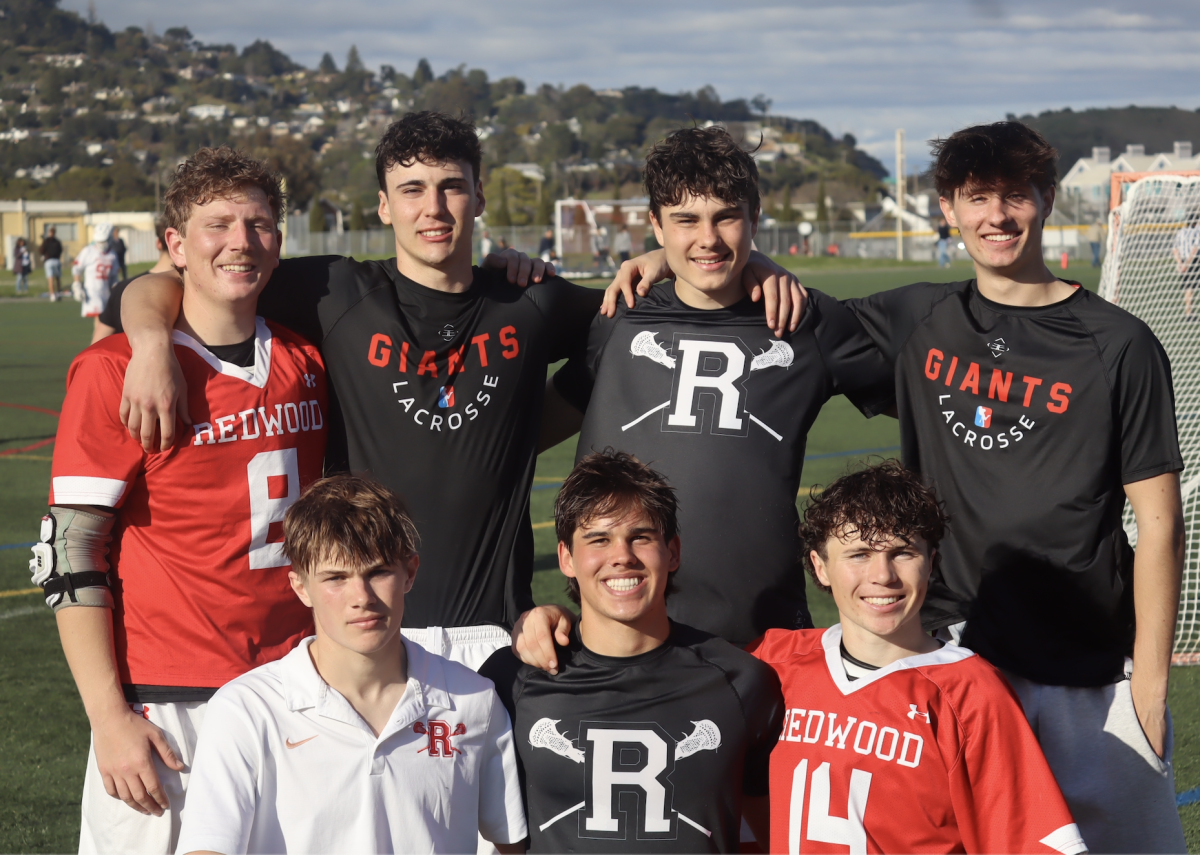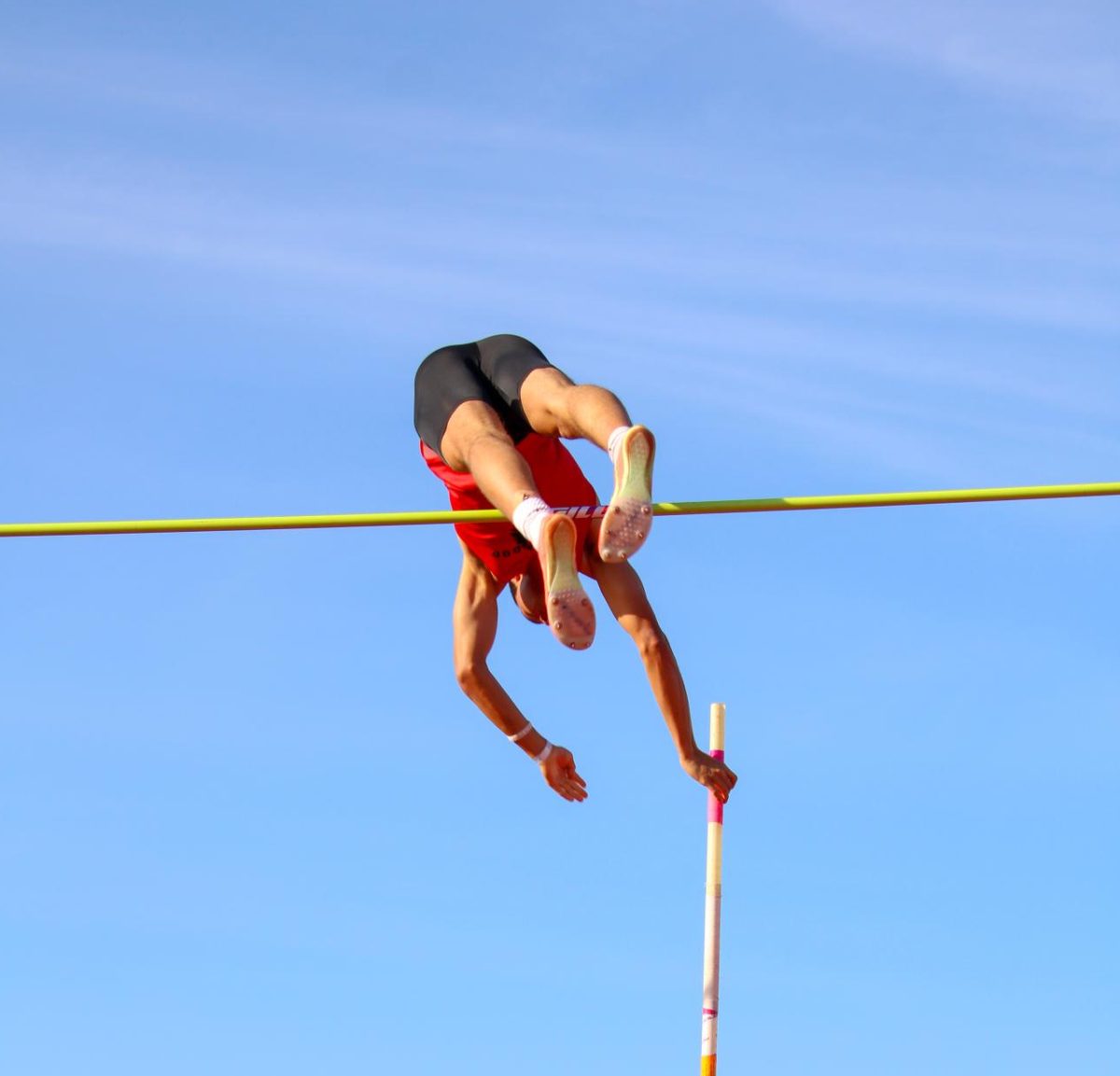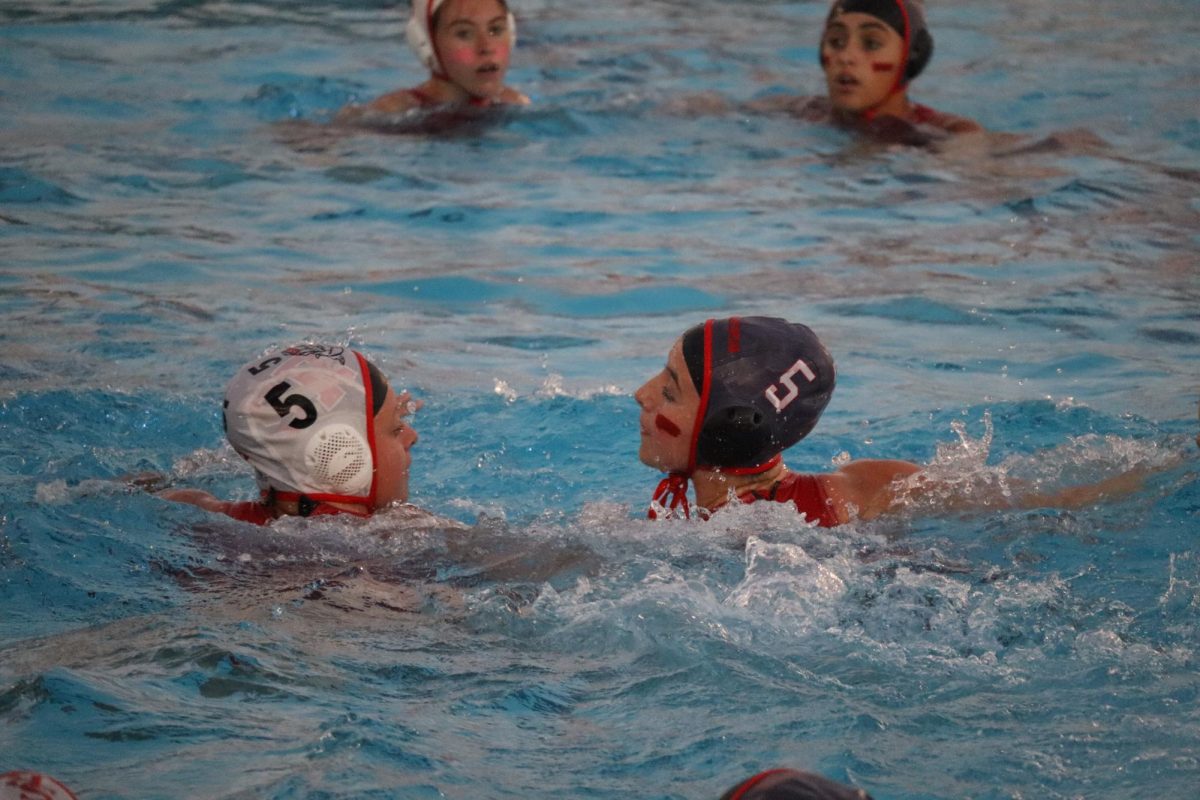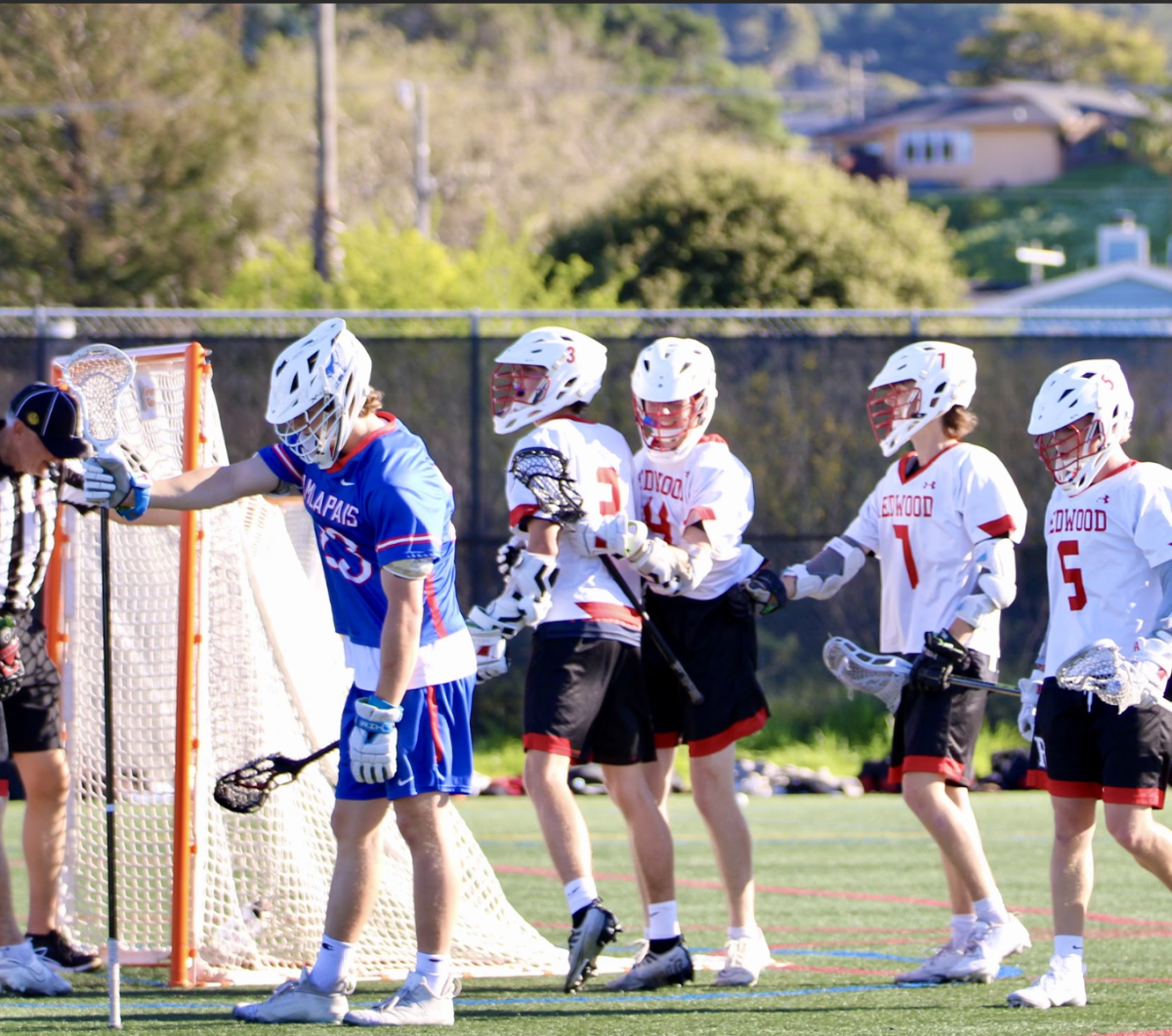Concussions on the rise in youth and professional sports
NFL’s concussion problem persists
Hall of Famer and former Pittsburgh Steelers center Mike Webster died of a self-inflicted gunshot wound in 2002. It was later revealed in an autopsy performed by Dr. Bennet Omalu, a forensic pathologist and neuropathologist, that Webster had developed chronic traumatic encephalopathy (CTE) due to repeated brain trauma. This was a defining moment in the game of football.
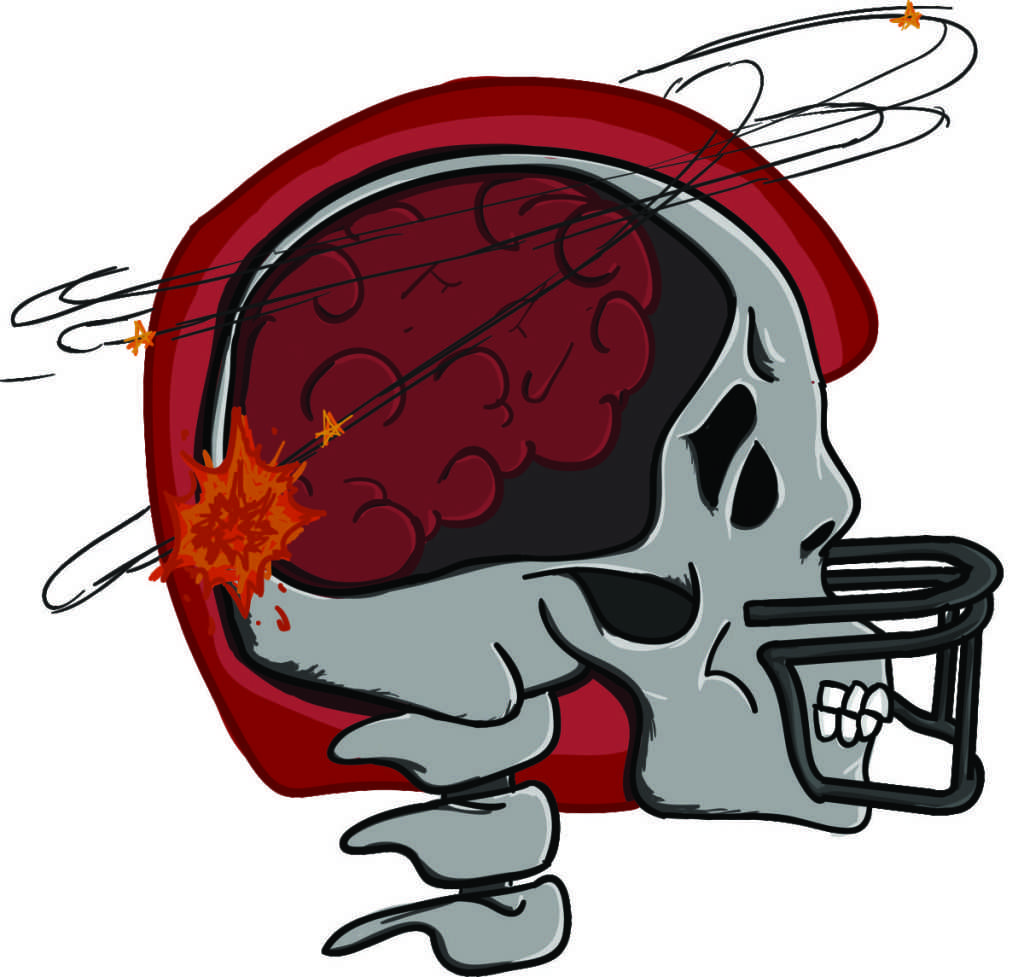
More concussions have been reported recently because of increased awareness and media reports about CTE. In the past two decades, extensive concussion research has been conducted in response to public outcry regarding neurodegenerative brain disorders, especially in the NFL, according to journalist Steve Fainaru.
Fainaru and his brother Mark Fainaru-Wada, both Redwood graduates, wrote a book in 2013 called “League of Denial” in which they exposed the severity of concussions and argued that the NFL has neglected the issue.
“We spoke with a bunch of NFL players, league officials, parents, government officials, and kids, and it was really real when we found out how many people were suffering from mental illness because of concussions. These are real people that we watch every Sunday,” Fainaru said.
Fainaru-Wada said that the NFL has been denying that the issue exists for about two decades.
The NFL formed a research board that was made of former team trainers and a rheumatologist, a doctor who specializes in arthritis and other joint, muscle, and bone diseases. There were no brain experts. This group produced 16 research papers over an eight year period about concussions and other brain traumas in football.
Fainaru-Wada said. “The message from the NFL was repeatedly that, ‘We don’t have a problem with brain trauma and football players are not susceptible to these kind of injuries.’
Fainaru was critical of the NFL’s denial of independent research that has been released in recent years.
“The NFL is a business. It’s an industry. An industry’s first instinct is to protect its business and in the case of concussions, where the NFL found itself directly in the middle of a public health crisis, their instinct was to deny that it was real and to attack other researchers with different opinions,” Steve Fainaru said.
However, not all concussions lead to neurodegenerative diseases. Former San Francisco 49er Steve Young sustained numerous concussions, but has not developed a neurodegenerative disease.
Most football-related concussions could be prevented by creating more tightly fitting helmets, according to Fainaru-Wada. The current standard helmets do not prevent the brain from rattling around in the skull.
Dr. Edgar Angelone, a neuropsychologist at Marin Neuropsychology Center who has treated teenagers who have had concussions and other brain injuries for more than 30 years, said he thinks the NFL needs to change rules regarding player safety.
“Things have to change on many different levels. The competition today is getting out of control. If you watched the latest football games, you would see that the players are hitting the other players head-to-head purposely to injure the other player, ” Angelone said. “If the issues like unnecessary contact are fixed, then the number of concussions will be reduced.”
A study recently released in the Journal of Athletic Training by the University of New Hampshire showed that if teams practice without helmets, the number of concussions is reduced by 30 percent because players learn to lead not with their head, but lead with their shoulder and hit lower.
“There is no clarity about how many people are going to suffer neurodegenerative diseases from playing football. All we know is that there is an increased risk of it,” Fainaru-Wada said. “The sport is a collision sport and it is violent. If the NFL can move up the kickoff, it can make adjustments to the rules on hitting.”
Degenerative diseases connected to concussions
Athletes who have suffered multiple brain injuries may suffer from CTE, a brain disease that severely impacts the brain’s ability to function. It can develop in people who have suffered from repeated trauma to the brain, though it is not restricted to football—research performed by Omalu has revealed that the brain disease can affect any athlete susceptible to brain trauma and that there is a link between CTE and depression or thoughts of suicide.
An estimated four million people are diagnosed with a concussion every year, according to the Centers for Disease Control and Prevention (CDC).
Angelone said if multiple concussions are suffered during a student athlete’s career, they may need to stop playing their sport completely or risk developing CTE.
“We are noticing more concussions. In fact, in the last report from the NFL, there was a significant increase in the number of concussions,” Angelone said. “I think people are more aware and that is why people have begun to report them more.”
As many as 10 to 20 percent of student athletes in Marin who are involved in contact sports will sustain a concussion each year, Angelone said.
Angelone said that more concussions are reported due to increased testing and heightened concern.
“People are looking at concussions differently than they were 10 or 20 years ago,” Angelone said. “Athletes are being taken out for even a small ding to their head, something that would not have even been thought about back then.”
[soundcloud url=”https://api.soundcloud.com/tracks/248695062″ params=”auto_play=false&hide_related=false&show_comments=true&show_user=true&show_reposts=false&visual=true” width=”30%” height=”150″ iframe=”true” /]
A number of professional organizations, such as the American Neurological Association, are invested in increasing awareness of concussions.
Concussions are suffered because of the impact caused when the brain hits the skull.
“The brain is a very soft tissue and it moves freely inside of the skull. The base of the skull is a very rough surface so when the brain hits the skull it causes shearing of the neurons,” Angelone said. “[The shearing] is the microscopic breakdown of the chemical components and the tissues of the cells of the brain, which is why we see the symptoms of concussions.”
[soundcloud url=”https://api.soundcloud.com/tracks/248695415″ params=”auto_play=false&hide_related=false&show_comments=true&show_user=true&show_reposts=false&visual=true” width=”30%” height=”150″ iframe=”true” /]
Concussions can cause confusion, memory loss, dizziness, nausea, and imbalance. These symptoms can last anywhere from a few days to a few months, sometimes lingering for years if post-concussion syndrome occurs.
Concussions are difficult to diagnose because their symptoms are numerous and can be mistaken as those of other illnesses, according to Americ Alvarado, Redwood’s athletic trainer.
“With a concussion, it’s not something you can see like a broken bone. You have to go with what the athlete says,” Alvarado said.
The effects of a concussion are cumulative for athletes who return to play before a full recovery, according to Angelone.
Angelone said that a second-impact injury occurs when a person suffers a second concussion before recovering fully from the previous one.
“We want to make sure that the athletes are free of symptoms, or are able to pass a test that lets us know that the player is completely healed, before they return to playing, ” Angelone said.
Concussions cripple students in the classroom
After trying to jump over a fence in sixth grade, senior football player Jono Chu received a concussion and suffered from amnesia, which caused him to forget what happened between climbing the fence and waking up in a hospital room.
Chu suffered another concussion in his final game as a senior last fall, and missed five days of school. He has suffered four concussions in his life, two of which occurred while playing a sport.
Fellow senior football player Ben Bialla has also suffered four concussions in his life, two of which resulted from playing football.
Bialla and Chu are two of many teenagers who have suffered at least one concussion, an injury that often has debilitating effects for young adults in their lifetime, even after recovery.
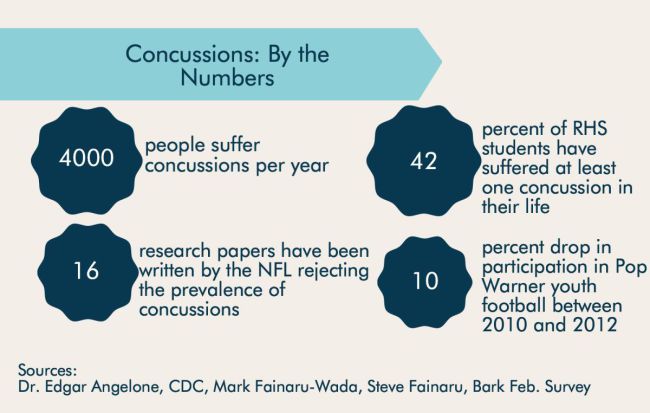
“I couldn’t focus on anything school-related for a while [after the concussion] because my head hurt,” Chu said. “As the semester ends, teachers start stacking up work, but most of my teachers were pretty understanding.”
Chu took make-up tests every day for about a week after returning from Thanksgiving break, in order to be caught up in time for finals.
“I feel like there are some classes, such as math, where my grade was on the border of an A or a B. I took a hit in other classes to get an A in classes like that,” Chu said. “I did not think I would be able to focus the same for every class, so I took the sacrifice.”
According to Alvarado, school is hard for teenagers who have concussions because their minds are working on so many things simultaneously during class.
“They have to focus, they have to prepare for tests, and they have to do their homework. It aggravates the mind and it causes more issues for the head, which can be worse with a concussion,” Alvarado said. “For a high school student who has to go to school and has to get good grades, and think about this and that, their mind is getting overloaded.”
After suffering a concussion during his first game this past fall, Bialla went to school and took a couple of tests on his first day.
“I returned to school and on the Monday immediately following the game, I was taking tests and it was hard for me to focus on them,” Bialla said. “I definitely got the worst grades of my life last semester.”
The Redwood football program had a smaller varsity team than usual this season and opted not to field a JV team due to the lack of participation. Alvarado suggested the decline could be due to concern among families surrounding the dangers of concussions and how they affect teenagers in school.
Redwood is not the only place in which football participation has declined. Participation rates in Pop Warner football, a national youth football program, have dropped steadily since 2010.
There was a 10 percent drop in participation in Pop Warner between 2010 and 2012, a loss of about 23,000 players.
“There is a legitimate decision-making process that probably has to be factored in for anybody who wants to have their kids play football,” Fainaru said. “It is impossible to say at this point how much of a risk there is of a kid suffering a concussion with long-term effects while playing tackle-football, but we do know that it is higher than previously thought, when people thought these were pretty minor injuries.”
Angelone attributed the decline in youth football participation to fear regarding the dangers of playing and how it may be impeding the development of the brain.
“There has been a significant amount of media attention surrounding the dangers of getting a concussion during a contact sport. I would imagine there is more concern about developing concussions while your brain is still developing,” Angelone said. “Traditionally, high school football has been a good ground for building friendships for males. But there may be a drop off in participation because of the concerns surrounding concussions.”
[soundcloud url=”https://api.soundcloud.com/tracks/248695227″ params=”auto_play=false&hide_related=false&show_comments=true&show_user=true&show_reposts=false&visual=true” width=”30%” height=”150″ iframe=”true” /]
The number of concussions that have occurred at Redwood has stayed constant in recent years, according to Alvarado.
Alvarado said he thinks that federal legislative action regarding athletic trainers would be the most effective way to improve the attendance of trainers at games, as not all schools’ athletic trainers are available at all athletic contests.
“The schools that have athletic trainers are very fortunate to have them every day and at every game. I think something needs to happen at the federal level that requires schools to have athletic trainers present at games [to improve immediate concussion care],” Alvarado said.
Angelone said that he wants coaches to focus on the athlete’s health rather than winning the game.
“I think that what is important is for the coaches to be aware. Coaches need to be proactive when it comes to head injuries,” Angelone said. “When the injury occurs, the player needs to come out and, if they are experiencing any symptoms, they should not return. We have to think about the player—not the team. This is not about winning, it’s about preserving the functions of the athlete’s brain.”
[soundcloud url=”https://api.soundcloud.com/tracks/248695578″ params=”auto_play=false&hide_related=false&show_comments=true&show_user=true&show_reposts=false&visual=true” width=”30%” height=”150″ iframe=”true” /]
Bialla said that one time when he got a concussion during a game, he continued playing in the same game even though he was not completely healed.
“I don’t think that my coaches were aware that I had a concussion,” Bialla said. “I did not feel the symptoms until later that night, so I did not go and tell them until practice the next week.”
New concussion testing has been implemented for Redwood athletes this year. The ImPact baseline test measures an athlete’s neurological function, reaction time, cognitive thinking, and memory.
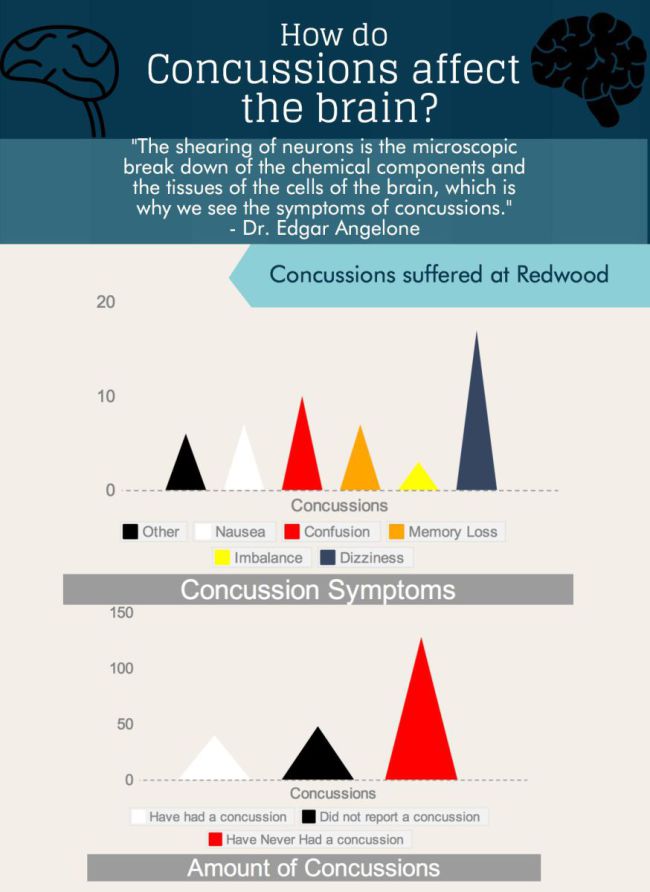
According to Alvarado, all that is needed to take the test is a computer and good wifi. The test requires roughly 45-60 minutes to complete, and costs $600 for a yearly subscription, which Redwood is paying for.
The test evaluates cognitive ability by giving a series of tests, such as attention span, memorization, and reaction time. In addition, there are a series of questions about the athlete’s current mental state. There are no wrong or right answers.
If an athlete who completed the test receives a head injury, they can come in and retake the test. Alvarado would then compare the athlete’s results to their previous baseline score to see if there are significant differences.
“We want to get a good baseline so if [athletes] were to have a concussion, we can see where you started from and go from there,” Alvarado said. “You compare the post-concussive test to the baseline test and if the numbers are higher, lower, not matching, or close to your baseline test, then it’s worrisome of what’s going on and if we can get back to baseline. ”
Only a few sports teams have been offered the test, but it will be introduced to all athletes within the next year.
Since the treatment of concussions has progressed during the last couple of years, Redwood wanted to keep up with the latest technology.
“It’s been widely used in the NFL and a lot of professional teams, it’s something that gives us a tool here at Redwood to say if someone got concussed that we did a baseline test on them,” Alvarado said.
Most Redwood coaches now will pull an athlete out of the game as soon as they see a big hit to the head, according to boys’ varsity lacrosse coach Blake Atkins.
“Any time a kid gets hit in the head, we get him off to the sideline,” Atkins said. “We have him checked out by a trainer, and if they even seem a second slow, we are overcautious and hold him out, because it’s much easier to get a second concussion in the time frame before you’re healed.”
According to Alvarado, it is very important that athletes see a physician and getting lots of rest after suffering from a concussion.
“At this level, and the athletes we have at Redwood, seeing a physician, taking time to rest, taking them out of activity is just as good because there’s no pressure to put them back into sport,” Alvarado said. “If anyone has a concussion, resting is the best and we provide that here at Redwood.”
Bialla’s doctor, Angelone, said that he should have missed one or two months of school before returning so he could fully heal before having to focus on schoolwork.
Chu said he does not regret playing contact sports despite emerging research about the long-term effects of concussions. “With everything that is coming out and with all the negative publicity around sports in which concussions occur, I have to say I would not take [my experiences] back and I would do it all again,” Chu said.

